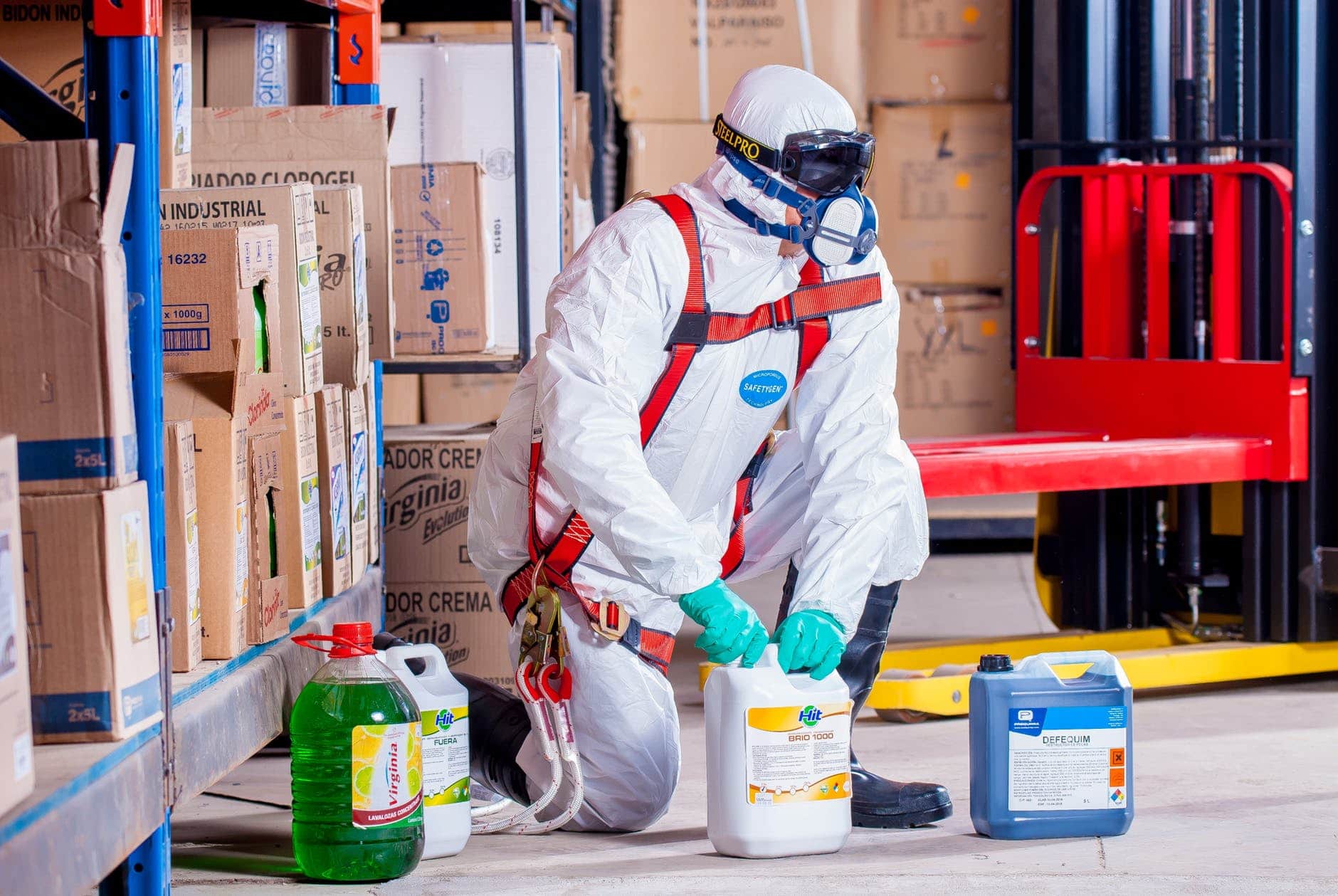Basic facts
Dermal exposure means harmful exposure of irritants to the skin of your employees. With the warm weather in full swing, worker's skin may become more exposed and susceptible to risk. Its protection is just as important as earplugs, a respirator or a hard hat.
According to the Center for Disease and Control, skin diseases are the second most common occupationally induced disease. It exceeds respiratory illness in rate and cases per year.
Workers' skin is commonly at risk from workplace chemicals. For example, non-volatile hazardous chemicals slowly evaporate as they remain on work surfaces for long times. Workers around chemicals are at risk of dermal exposure as chemicals may absorb through their skin without notice. Dry or broken skin give chemicals easier access to enter a worker's body.
Skin disease takes on various forms such as:
- Irritant contact dermatitis - skin damaged by friction, over-exposed to water or the cold. Chemicals, like acids and solvents, also cause irritant contact dermatitis.
- Allergic contact dermatitis - red, itchy skin caused by direct contact with a substance which causes an allergic reaction.
- Folliculitis - skin condition in which hair follicles become inflamed or infected.
- Skin cancers - include melanoma, squamous cell carcinoma, basal cell carcinoma and more.
Symptoms of skin disease include:
- Painful and/or itchy skin
- Blisters
- Infections
- Redness and/or swelling
Safety facts
To inhibit or lessen dermal exposure on the job, there are several preventative actions to take. Personal protective equipment (PPE) is one of the most important aspects of personal safety and is no exception when it comes to skin exposure. When handling or around chemicals, it’s best to wear thick, protective clothing like aprons, long-sleeved tops and pants, as well as chemical-resistant gloves.
In cases when chemicals or substances make direct contact with the skin, a worker may look to the following type of safety wipes:
- Dosimeter patches - protective patches which are used around radiation
- Dermal wipes - strong cleaning wipes used against crude oils and other oil-based fluids
- Surface wipes - typical house cleaning wipes, like Lysol
Moreover, it’s recommended that workers use pH-neutral soaps or acidic soaps to wash their hands after their shift. These soaps may restore a worker’s pH balance in/on their skin. Commonly, employers suggest that their employees change their clothes at work and wash them separately to avoid spreading any chemical residue.
Examinetics' service for skin exposure
Examinetics offers Hazmat exposure exams, which ensures a worker’s safety while working around a plethora of hazardous material like asbestos, lead, cotton dusts and carcinogens.
This exam includes:
- Physician's exam
- Clinical tests
- Laboratory analysis
- Medical clearances
- Proper forms and documentation
Contact us today to learn more.
Sources
· OSHA Safety and Health Topic: Dermal Exposure
· The American Academy of Dermatology
· National Institute for Occupational Safety and Health: Skin
· Occupational Skin Exposure
· A Safety and Health Practitioner's Guide to Skin Protection
· Mayo Clinic
---
This is business-to-business information intended for EHS (environmental health and safety) professionals and not intended for the final consumer. Companies should check the local regulatory status of any claim according to their individual needs, requirements and intended use.
